I'm taking the plunge into milling my own flour to use in breads, sweets, maybe pasta etc.
I have no experience....I've never even seen a home mill in person until last week when I became the very, very proud owner of a Komo Fidibus XL 600 watt grain mill. The glass tube on the right is a sifter that attaches to the mill when you remove the bowl. There are inserts for the sifter down in front that are different sizes.
I think it's so pretty. Which is a good thing since it will be living on my kitchen counter a lot ![]()
I'm well stocked with many different kinds of heritage and ancient grains:
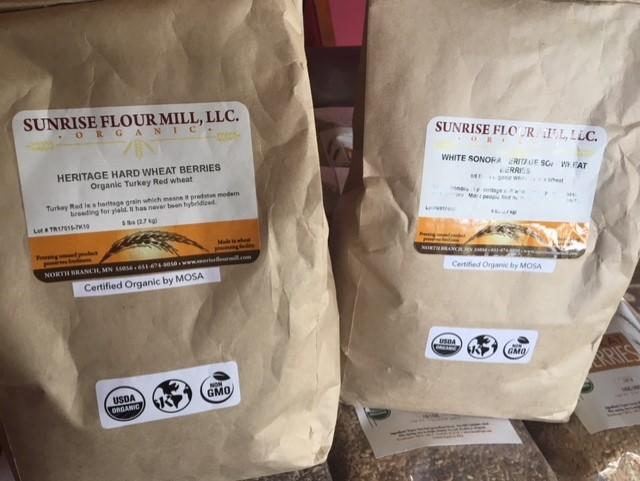
The manual that came with my mill says that you can also grind spices, legumes and coffee beans. I've read online that you can also do rice which must be true because the manual also says that if you need to clean it for some reason (meaning you milled something oily that isn't recommended) you are to run long grain rice through.
So, the last few days I've been googling and reading and watching videos online and also reading through the following books:

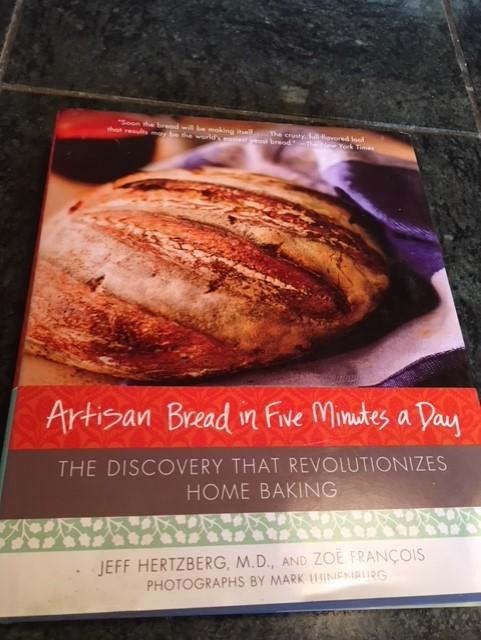

The manual that came with my mill doesn't say to do this, but I read online that it was recommended to run a couple cups of grain through and then discard the flour--just to make sure it's all clean and working right. I'm glad I did because it gave me a little chance to play with adjusting the mill from fine to coarse and in-between.
I used this kind:

Rule #1: Turn the machine on and THEN dump your grain in the bowl/hopper.
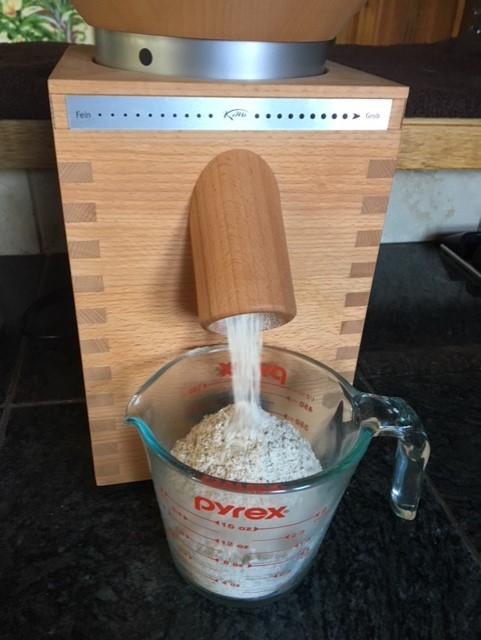
Oh it smelled SO good. Clean and sweet and a bit nutty.
You adjust from fine to coarse by turning the bowl/hopper--to the left is Fein (fine) and to the right is Grob (coarse)--it's made in Germany and comes with a 12 year warranty.
I was a bit confused at first. You see that black dot on the bottom of the bowl/hopper?
I assumed that meant that if you want it the finest grind you can get that you move it all the way over until it can't move any more (the bowl/hopper has "clicks" that you can feel to make your adjustments). That isn't the case. When I put it clear to the left and turned the machine on, the stones were touching/grinding together. You don't want that. I had to click to the right about 6 clicks to get it to stop doing that. I couldn't figure out why it wasn't calibrated like I thought it should be until I started thinking about the grinding stones and how they heat up during use. The more you use it, the warmer they get causing you to maybe need to adjust lower to get to the finest setting you can. Trust me, you know immediately if you need to adjust up so that the stones don't hit each other.
Side note: After opening the bag of grain I decided to see if the Vacmaster would seal it up for me again.
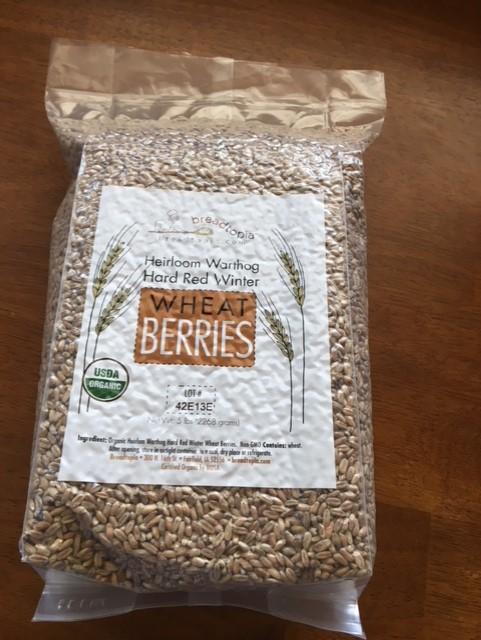
It worked! That will come in handy!
Anyway, I've stocked up on yeast. But, then after reading a bit online I decided it would be wise to make a starter. I've never done that either. Frankly, it seems daunting. All the feeding and then throwing some of it away and then feeding again. I don't have children....but I have something similar, it seems, in a jar on my counter now😛
I'm starting with a very basic recipe from a book listed above called The Best Bread Ever. It's called Simple Wheat Starter. It uses some AP flour, some whole wheat flour (I used the hard red shown right above here), water and a pinch of yeast. Here is is just after I made it:
Question: Could I have used the whey that is in my fridge that I saved after making cottage cheese in place of the water?
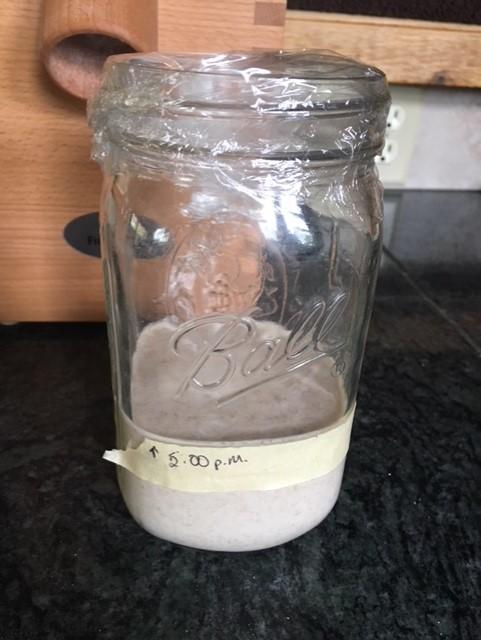
Here it is right before I went to bed last night
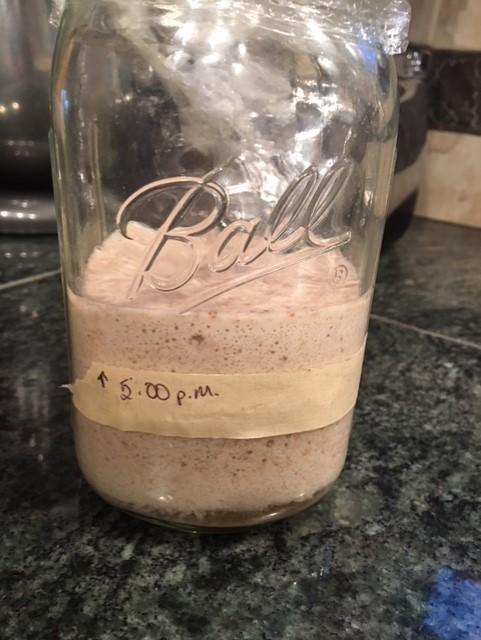
Right now the bubbly part has doubled, but see that bit of liquid in the bottom of the jar? Well, it's about an inch tall now. I was concerned but after reading online maybe that's normal for such a starter like this? It smells very sweet and good. I'm going to feed it again here in a bit. Sigh. I'm nervous.
The starter is supposed to be ready to use by Wednesday morning.
I could use major pointers on starters. And , pretend you're explaining it to a 4 year old so that I can understand 😁
**********************************
Now, I'm going to jot down a few thoughts, questions, things I found online etc. Later, after I have my own experience, I can either debunk or support.
Yesterday, for me, a half cup of the hard red winter wheat berries netted roughly a cup of flour. BUT it was "fluffy".
The hard wheat might be better for breads and the soft wheat might be better for pastry and sweet things. Spelt might be better for pastry items too.
In a recipe that uses store bought AP flour, if you sub fresh milled flour you usually have to increase the water. Or, you generally use 3 T. less of milled flour per cup of flour in a recipe. If using spelt flour you might use 2-4 T. MORE per cup in a recipe.
I have a great video where the person making the bread uses no measuring at all. Just goes by feel. I want to get to that place and be like him!
Using the autolyse method seems like a good way to go. Is that the same as kneading for a bit, and then resting for 10 mins and then kneading again? Also, while kneading, have a bowl of water to dip fingers in to reduce sticking to hands.
Vital wheat; I ordered some. Should be here the end of the week. Do I need it? I dunno. I've read that it helps with rising when milling your own grains. Then, I've also read that there is enough gluten so why would you need to add more. Is there more gluten in hard wheat than soft wheat? Need to do more research on this.
So, that's what I've been up to. Anyone have a mill? Anyone that can answer my billions of questions? I'll post here with successes and failures. I hope others join in.




